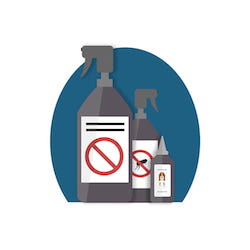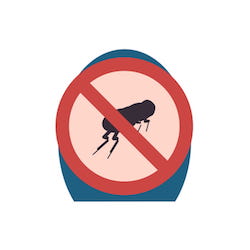Fleas are a risk to the health and wellbeing of dogs everywhere, so it’s important to know how best to tackle a flea infestation and to be prepared to prevent those tiny blood-sucking nasties from getting their teeth into you or your dog.
We’ve compiled this guide with the help of Dr. Will Woodley, founder of VetBox. If you’re looking for essential information about fleas, how to get rid of them and advice about flea prevention – you’ve come to the right place!
To help you find the information you’re looking for, use the navigation menu below and click on the most relevant chapter title.
Navigation Menu
- ‘Everything you need to know about fleas’ – brush up on your flea knowledge (knowledge is power!).
- ‘How to tell if your dog has fleas’ – If you’re worried your dog has fleas and want to know how to check, choose this option.
- ‘Flea Prevention Guide’ contains advice on regular habits to keep fleas at bay
‘How to get rid of fleas from your dog’ and ‘How to remove fleas from your home’ are most relevant if you’ve discovered a flea infestation.
Everything you need to know about fleas
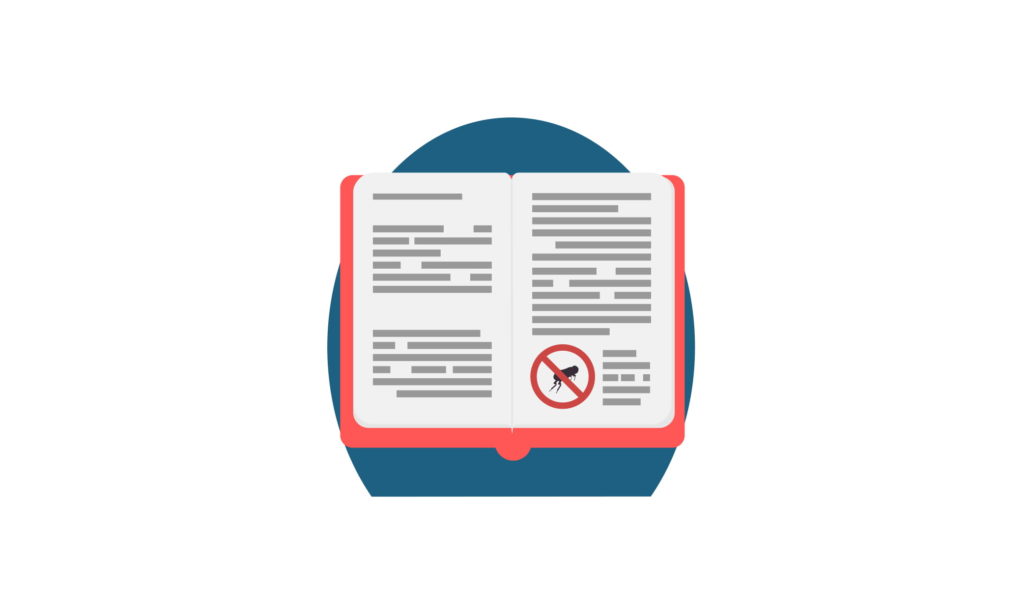
As we’re about to see, fleas are bad news for dogs, cats and their owners. But that doesn’t mean we need to live in fear of them; thanks to veterinary medicine there are some very reliable medicines and treatment products on the market available over the counter and on prescription from vets, without costing too much money.
Since it’s always best to know your enemy in order to defeat them, we’ve compiled an essential fact file to help you beat those little nasties and ensure they don’t infect your home or dog.
What are fleas?
Essential flea fact file
- Size: 1.5mm to 3mm long.
- Colour: Reddish-brown.
- Lifespan: Adult fleas live for around 7 days once they’ve chosen their host.
- Reproduction rates: Female fleas lay on average 20-30 eggs a day.
Fleas are parasites that can live in the hair of pets like dogs and cats. They are classed as parasites because they require the warmth and blood of a host, such as your dog or cat, to feed, live and breed.
Usually between 1.5mm and 3mm in length, fleas can also be carried by other mammals such as foxes, rodents like rats and mice, birds and even humans.
Because of their unique and infamous leaping skills, adult fleas can leap as far as 20 cm. In various stages of the flea life cycle they live in fabrics like carpets, curtains, beds, and elsewhere in and around your home. Let’s get to know the flea life cycle in a bit more detail.
What you need to know about the flea life cycle
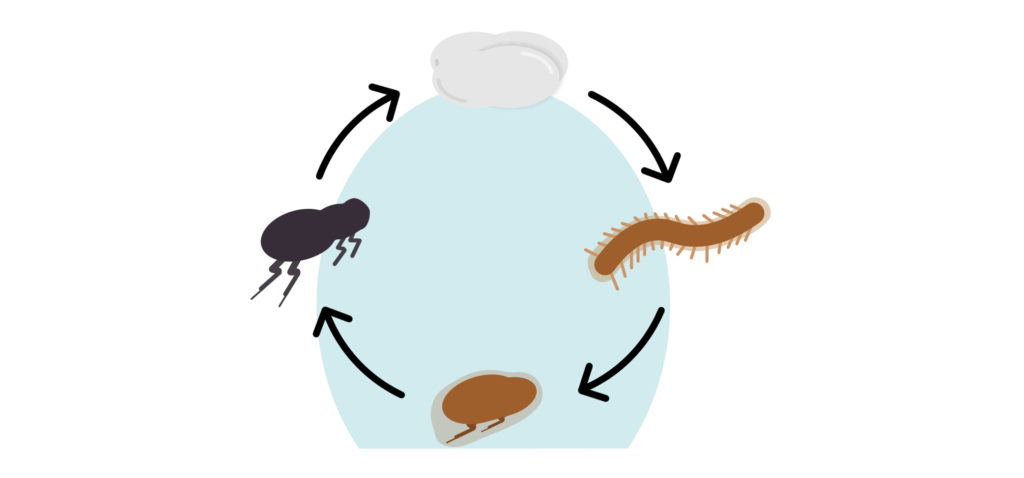
How does knowing about the flea life cycle help prevent fleas?
Different methods of treatment and prevention are more effective at killing a flea in one stage of its life cycle than others; so it’s best to take what’s known as an integrated flea control approach. Knowing which flea stage you’re dealing with will help you ensure the entire flea population is killed and removed from your dog and home.
The flea life cycle
- Eggs
- Eggs are usually laid once a female flea has found a host (ie: a dog or a cat), fed on its host’s blood (yuck!) and mated. This will usually take 1-2 days.
- These are sticky when initially laid but soon lose their stickiness. If laid on your dog, they can easily fall off and become lodged in your carpet or other soft furnishings such as your dog’s bed.
- In homes, flea eggs live for 2-3 days before hatching due to the warmth of your carpets and other furnishings.
- Larvae
- Mostly live in the bottom layers of carpets or in cracks in floorboards. They are around 2 mm in length and resemble a small, bristly maggot.
- Flea larvae are not parasitic; they do not live on a live host but feed off flea fecal matter (yes, flea poop – yuck!) that falls off dogs and cats.
- Larvae molt their cuticle (a technical word for skin) in order to grow. They go through this process twice and then enter the third stage of development – the pupal stage.
- Pupae
- Pupae are usually 1.5 mm to 3 mm long. They will appear white to begin with, turning yellow and eventually brown. The development process in ideal conditions usually takes 2-3 days.
- Pupae can remain in a cocooned and dormant state for as long as a year.
- Pupae stage fleas are stimulated by warmth, vibrations and exhaled carbon dioxide; these are all signs that a viable host, such as your dog, is nearby and they will emerge.
- Adults
- Adult fleas are 1.5 to 3 mm long, with six legs and 3 segments.
- Adult fleas can live up to 185 days on a host. They are especially adept at crawling through hair, choosing to use their special jumping skills to acquire a host.
- Male and female fleas usually mate whilst living on a host around 24 hours after their first feed.
Further information about fleas
Are there different types of fleas?
There are more than 2,500 species of flea recorded worldwide and 62 of these species can be found in the British Isles. The two species of most concern are cat and dog fleas, which are two separate subspecies. Despite these two separate species classifications, both species can be carried by and bite dogs and cats, however, once a cat flea has bitten a dog, it will most likely abandon it as a host, realising that it’s not its preferred source of sustenance.
How many fleas live on a dog?
When counting fleas on dogs, the number is often referred to as a flea burden. In studies of flea burdens on dogs it was found that most infected dogs had, on average, 20 fleas living on them at one time. In more extreme cases, dogs have been known to have almost 100 fleas living on them.
However, only five percent of the flea population in your home is actually present on your dog; the other 95% are eggs, larvae or pupae hiding in warm, protected and shady areas of your home and garden. For every flea you find on your dog, there are almost another 100 fleas living in different life cycle stages in your home. That’s quite a disgusting thought!
How quickly do fleas reproduce?
Fleas reproduce at astonishingly speedy rates; a single female flea can lay as many as 50 eggs in one day. A few quick sums make these pests seem even more disgusting. Consider this: an adult flea’s average lifespan is 100 days and the average flea burden (the term for the number of fleas living on a host) is around 20.
An infected dog who doesn’t receive flea treatment for a month could be helping to spread 15,000 eggs into their environment. Those eggs will very quickly turn into larvae and then within just a matter of days, go through the complete flea metamorphosis and become adults, beginning the cycle all over again. This gives a rough idea of how quickly a flea infestation in your home can get out of control.
How do dogs and cats catch fleas?
Fleas are attracted to dogs and cats
Dogs and cats provide an ideal environment for fleas to live and reproduce; they’re warm-blooded and hairy, which provides the warmth and food source that fleas need to survive and reproduce.
In the British Isles, fleas are more likely to flourish in warm, humid environments. Letting your dog run around freely outdoors during the spring and summer months will increase the risk of coming into contact with fleas ready to pounce.
From other animals
There are several ways that dogs and cats can catch fleas. The most likely way is through coming into direct or indirect contact with another animal who is acting as a carrier. This can include other mammals like rabbits, foxes, rats and mice.
Outdoor flea infestations
Fleas are, unfortunately, incredibly resilient and so can survive either in a dormant state for months or for several days as adults in outdoor, shady and warm areas.
Your garden or local dog park can become infected if a flea-carrying animal such as a fox, rabbit or hedgehog makes its way through your garden.
Fleas will attach themselves to dogs as they pass by, especially if the dog is rolling in grass, or exploring leafy, shady areas outdoors.
Indoor flea infestations
Fleas can also live in a semi-dormant state inside your home. Flea eggs, larvae and pupae can be found in warm protected areas of your house such as in between floorboard cracks, in carpets and other soft furnishings. A dog may catch fleas by coming into contact with a dormant pupae flea population indoors.
Can humans catch fleas? Can fleas live in your hair?
The short answer is yes, and no… Yes, fleas can and will bite humans, but our blood isn’t considered an ideal meal for them, so they won’t make their permanent residence in a person’s hair. But fleas can use our clothing or hair as a convenient and fast transport until they find their next four-legged host.
Generally, one of the first warning signs of a flea infestation is when a human receives a flea bite, so we were surprised to learn from our survey of more than 1,400 dog owners that one in three didn’t realise that fleas could pass between humans and pets.
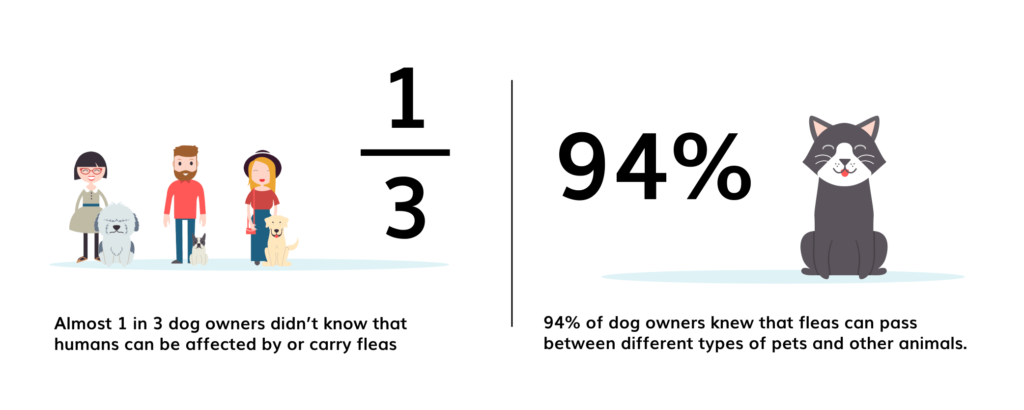
However, just because your dog is the ideal host for a flea doesn’t necessarily mean that your pet is always the entry point; freshly laid flea eggs are very sticky and can easily become ingrained on the sole of your shoes, so it’s possible for fleas to enter your house at this stage in their life cycle. This means you shouldn’t blame or punish your dog for bringing a flea infestation into your house.
Why are fleas bad for dogs?
Fleas are bad news, not only can they can cause a whole host of skin issues, including itchy, irritated and even infected skin, fleas can carry disease and tapeworms which in turn cause a whole host of other health problems for your dog.
Tapeworm larvae can be spread to your dogs stomach if they lick a flea-infected patch of skin or fur. These internal parasites are much more unpleasant to get rid of and also pose a risk to humans, too. If you suspect your dog might have fleas, be very careful about handling your dog, use gloves while checking or wash your hands very thoroughly before handling any food or kitchen equipment.
If you suspect your dog has fleas it’s important to recognise the tell-tale signs of fleas and to assess the severity of the infestation in your dog’s environment and dealing with it as quickly as possible.
How to check if your dog has fleas

What are the signs your dog has fleas?
It’s a fact of doggy life that they scratch. After all, humans scratch from time to time, too. That means that not every scratching dog has fleas, and not every perfectly contented dog is completely free from fleas either.
However, because fleas survive by biting dogs and feeding off their blood, there are some key signs to look out for, including:
- Scratching or itching excessively
- Flea dirt
- Bites
How to identify and spot a flea bite
Flea bites can be spotted quite easily on a human’s skin since we don’t have as much hair covering us as our four-legged friends.
You’ll be able to identify the bites if you can see tiny red dots, smaller than other insect bites since fleas are very small themselves. The bites will often appear in clusters of three; this will occur sometimes if a flea is disturbed during feeding it will later return to a similar area and continue.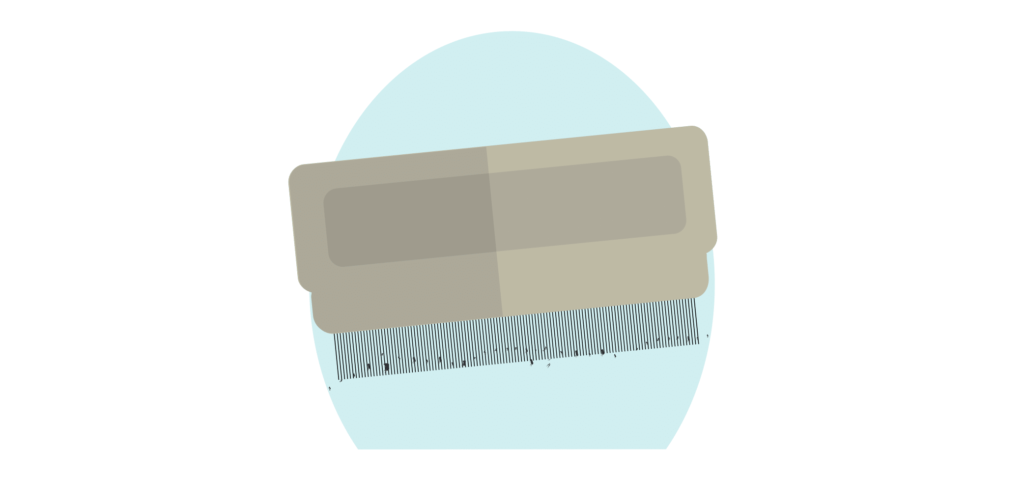
- Check your dog’s belly, armpits and ears
- Use a flea comb
- Use the damp paper & flea comb technique to identify the presence of fleas
- Look out for signs of flea dermatitis
Dermatitis can be a result of several underlying health problems, including food allergies, ear infections, mites and mange. Dermatitis is often referred to as a secondary condition, and so it’s important to consult your vet to find the root cause.
When a flea bites your dog, they excrete saliva to help them to locate a suitable site on the host’s skin for feeding. It’s actually the saliva, rather than the bite itself, that causes a dog to itch.
Dermatitis on dogs can be identified by the following symptoms:
- Intense itchiness
- Licking, biting or even chewing at their skin
- Secondary infections resulting from the aggravation of the skin
- Hair loss
- Hot spots or sores
- Bad smelling skin or ears
How do I get rid of fleas on my dog?
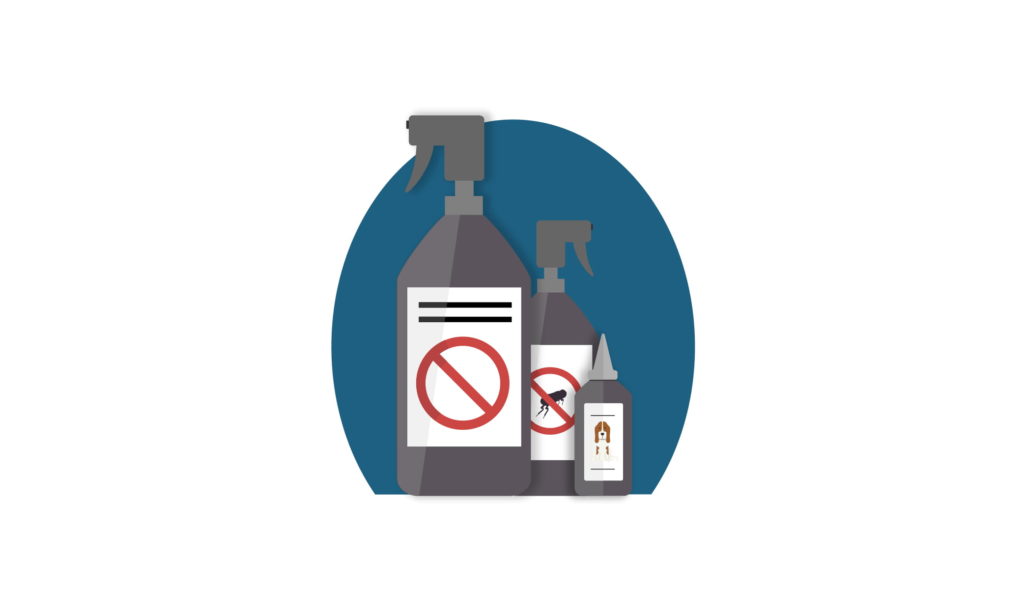
When it comes to getting rid of fleas, it’s understandable you’ll want to kill the little nasties as quickly as possible. We’ve explored all the options below so you can choose the best one to suit your dog.
Use veterinary approved dog flea treatments to kill fleas quickly:
- Spot-on treatments
- Flea tablets
- Use flea removal shampoos
- Natural remedies to get rid of fleas
- Check other places your dog has been
- Clean your house (remember that only 5% of fleas actually live on your dog)
Use veterinary approved dog flea treatments to kill fleas fast
How to use spot-on treatment
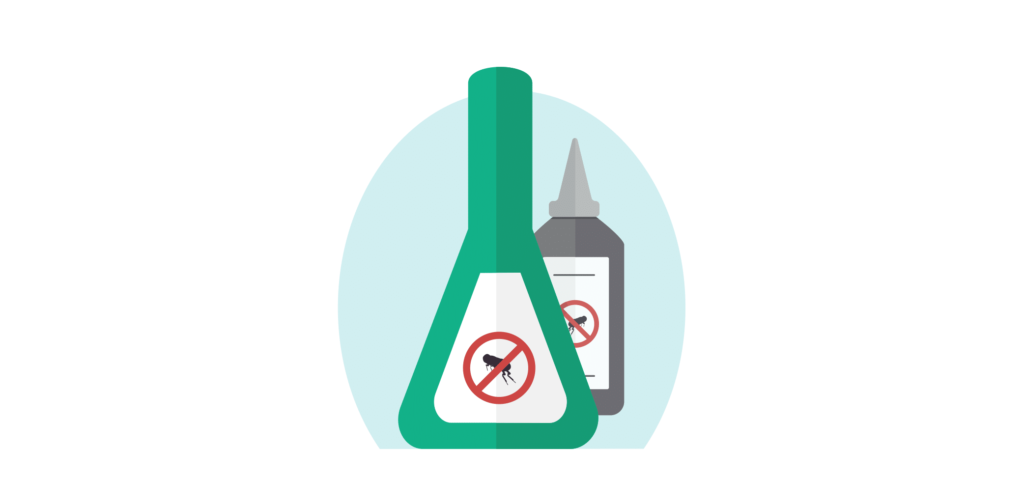
- Remove your dog’s collar
- Apply the correct amount directly to your dog’s skin.
How to use flea tablets

Here are our top tips for treating your dog for fleas using tablets:
- Pick the right type of tablet – some will last only 24 hours whilst others will continue working for up to a month.
- Make sure you give your dog the correct dosage. If in doubt, check with your vet.
How to use flea removal shampoos
- Begin at your dog’s neck. Apply shampoo and work into a thick lather, which should kill any fleas further up your dog’s head.
- Leave the lather in place for about 2-3 minutes, while you wet the rest of your dog’s body, then add shampoo and work into a thick lather.
- Rinse thoroughly. Flea shampoos can dry out your dog’s skin so you may find it useful to also wash using a conditioner following the shampoo wash.
For more tips and a detailed step by step guide to removing fleas from your dog, check out our tips here.
How do I get rid of fleas in my house fast?

Adult fleas, the kind you’d usually find living on your dog, only make up around 1-5% of an infestation, which means that for every adult flea you find, there’s at least another 95 fleas in other stages of development in your home. It’s time to address that other 95% and examine the best methods to rid your house of fleas.
1. Wash your bed sheets and other soft furnishings

2. Vacuum and spray your carpets
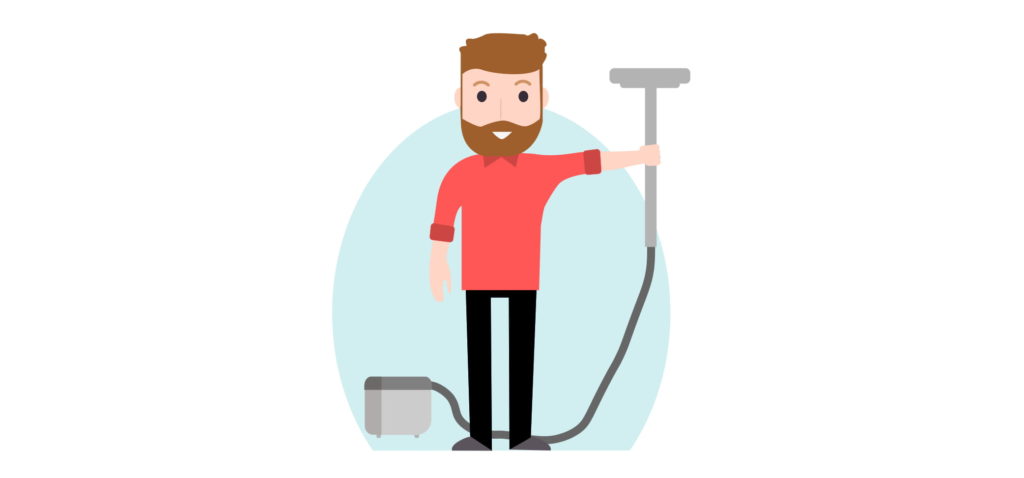
3. Clean your hardwood and laminate floors
4. Treat your garden to kill fleas

Natural ways to get rid of fleas in your house
- Sprinkle salt on carpets
- Use a homemade vinegar spray
- Use food grade diatomaceous earth
For even more tips on how to remove fleas from your home and garden, check out our full article which covers everything you need to know.
Flea Prevention Guide
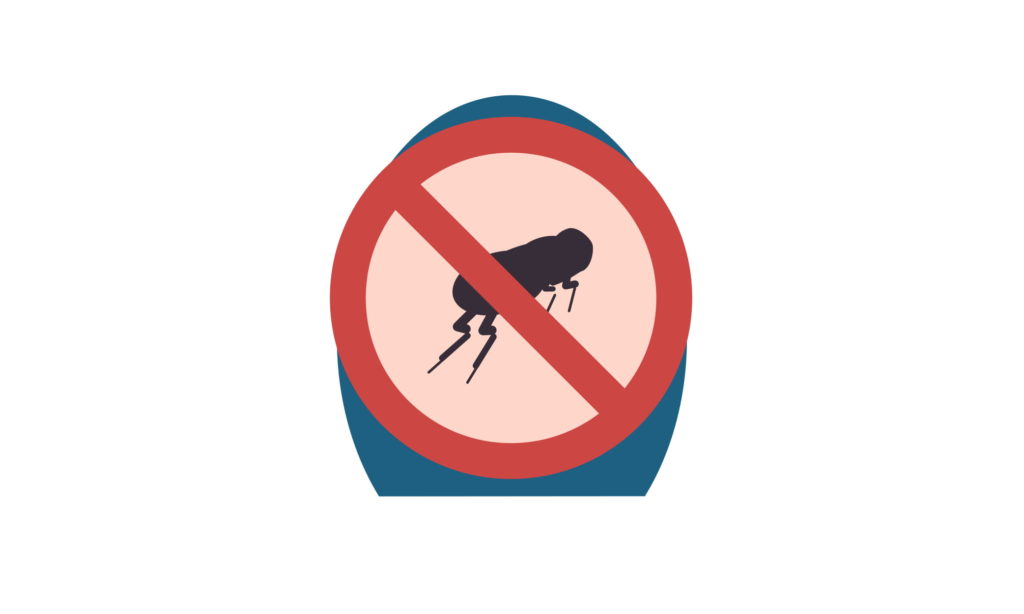
Prevention is better than a cure, so the old saying goes. And in the case of preventing those teeny blood sucking nasties, it certainly pays to ensure your home and your dog are an inhospitable environment as possible for fleas at all stages of their life cycle.
As with any treatments you’d use after discovering fleas on your dog, it’s also far more effective to take an integrated approach to preventing fleas in the first place.
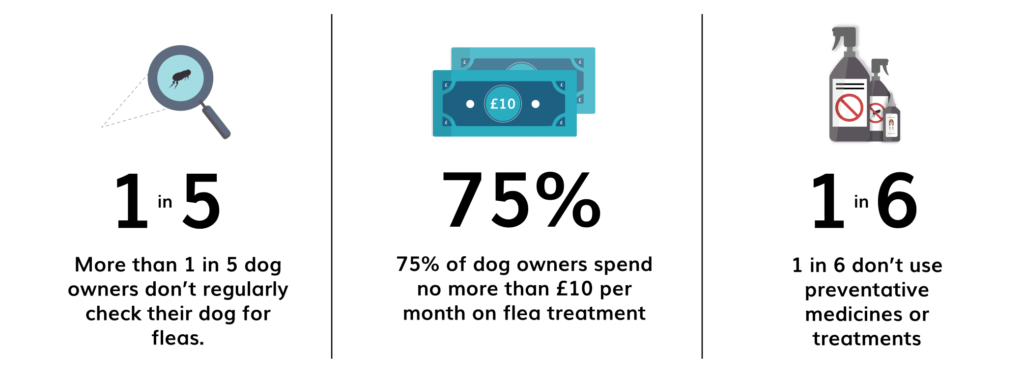
- 1 in 5 dog owners don’t regularly check their dog for fleas and 1 in 6 dog owners don’t use preventative medicines or treatments. That’s quite shocking considering there are more than 8 million dogs in the UK.
- Most vets, including Dr Will Woodley, recommend an integrated approach – which includes treatment, checking and additional care such as shampoos.
- Treatment and prevention isn’t too expensive, most dog owners spend no more than £10 per month.
Here’s the best advice on flea prevention practices to make your pooch a flea-free doggy.
How to prevent your dog from getting fleas
How often should you check your dog for signs of fleas?
Here’s what Dr. Will Woodley, veterinary professional and founder of VetBox, says about regular checks:
“I would recommend checking for fleas on a monthly basis. To inspect your dog, turn them onto their back and check the areas where fleas like to hide. The armpits and groin are two areas that tend to be warm and protected, making them preferred spots for large flea populations. Check the ears carefully for signs of scratching, redness, blood, or flea dirt.”
Products for flea prevention
There are various products that you can use on your dog to prevent fleas. One of the most popular are pipettes, also known as spot-on. You can also get hold of tablets, sprays and shampoos all suitable for use on your dogs.
To help you decide which product is best for your dog, we surveyed more than 1,400 dog owners to discover which product type and which brands they use most often. Keep reading this guide to discover the results of our research.
Which flea prevention treatment is best for my dog?
Since it’s best to take an integrated approach, you should consider using a flea treatment product that you can apply to your dog’s skin (or administer to them orally) at regular intervals.
In our 2018 survey of more than 1,400 UK dog owners, we discovered the most popular types of flea treatments. Here are the results:
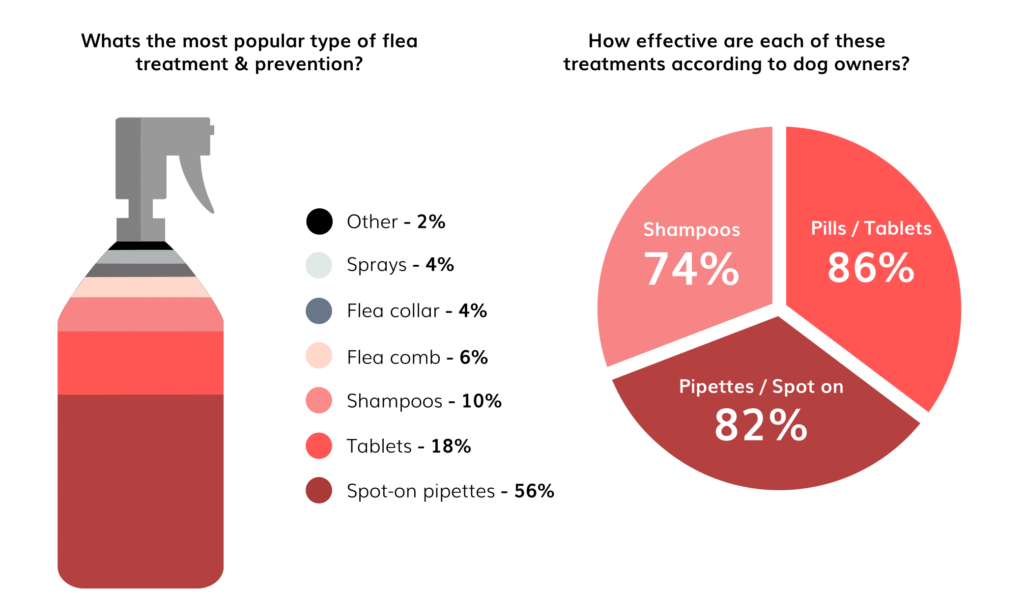
- The majority (56%) of dog owners use spot-on treatments, followed by tablets (18%), which means that almost three-quarters of dog owners are using these top-recommended flea killing products.
- Tablets came out slightly strong when we asked dog owners to tell us how effective these different product types were at preventing fleas.
We’ve created an even more detailed guide, backed-up by researching real dog owners and the methods they use to prevent fleas – check it out here.
Over to you! What flea prevention and treatment methods have you found most effective? Do you have any tips or advice you’d like to share with the DogBuddy community? Let us know in the comments below, or post your tips on Facebook or Twitter – remember to tag us @DogBuddyCo.
The advice contained in this article is not intended to be a replacement for professional veterinary advice.


